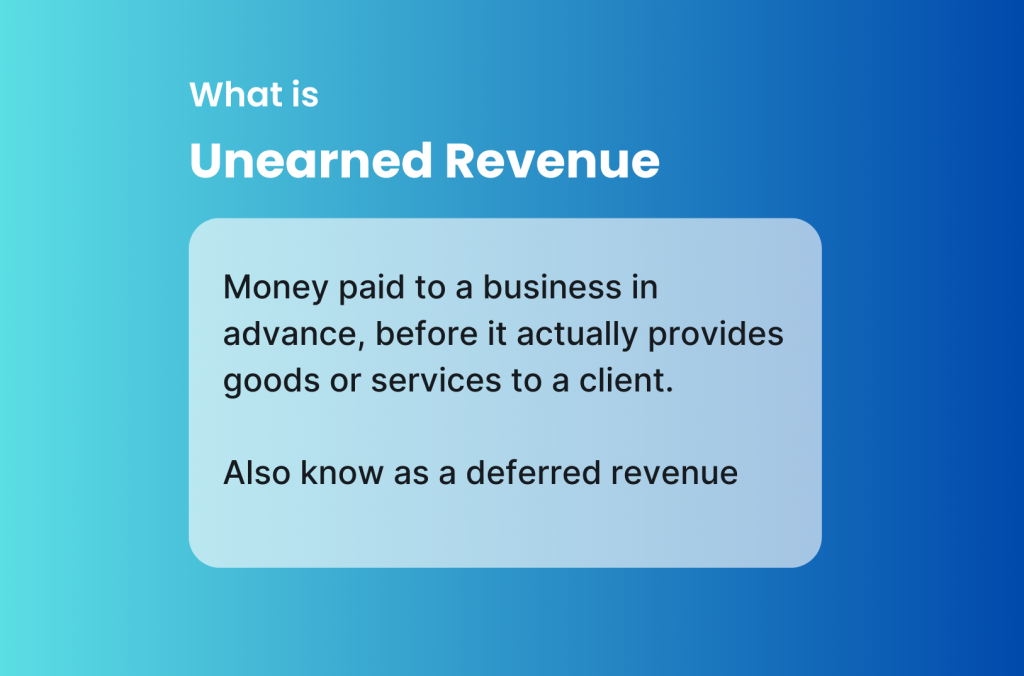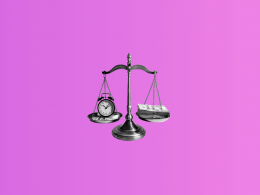Unearned revenue, also known as deferred revenue or customer deposits, refers to payments received by a company for products or services that have not yet been delivered or rendered. This unique financial concept holds a notable position on a company’s balance sheet, as it has implications for both revenue recognition and the company’s liabilities.
In this article, we’ll discuss the nature of unearned revenue, its treatment as a liability, and its impact on financial reporting and business operations.
Nature of unearned revenue
Unearned revenue arises when customers prepay for products or services before the company has fulfilled its obligations. Common examples include subscription-based services, prepaid insurance policies, and advance ticket sales. As the company delivers the goods or services over time, it gradually recognizes the unearned revenue as earned revenue on the income statement.

Unearned revenue as a liability
Unearned revenue is considered a liability on a company’s balance sheet because it represents an obligation to deliver products or services to customers in the future. Until the company fulfills its obligations, it owes the customers the goods or services for which they have already paid. The liability exists until the company performs its contractual duties or provides the products or services, at which point the unearned revenue is recognized as earned revenue and the liability is reduced.
Unearned revenue in books and financial reporting
Let’s look closer at how unearned revenue affects financial reporting and business operations. The treatment of unearned revenue as a liability impacts a company’s financial reporting in several ways:
- Accurate revenue recognition: By treating unearned revenue as a liability, companies can more accurately recognize revenue in line with the accrual accounting principle, which states that revenue should be recognized when it is earned, not when the cash is received.
- Balance sheet presentation: Unearned revenue appears as a current liability on the balance sheet, reflecting the company’s obligations to provide goods or services in the near term. This provides a clearer picture of the company’s financial health and helps stakeholders better understand the company’s outstanding obligations.
- Income statement impact: As the company fulfills its obligations, the unearned revenue is gradually recognized as earned revenue on the income statement. This process ensures that revenues are matched with the expenses incurred to generate those revenues, providing a more accurate representation of the company’s performance during a specific period.
The impact of unearned revenue on business operations and decision-making
Unearned revenue can also impact business operations and decision-making in various ways:
- Cash flow management: Prepayments from customers can improve a company’s cash flow position, providing funds for working capital needs or investment in growth opportunities. However, businesses must carefully manage these funds to ensure they can fulfill their obligations to customers.
- Performance measurement: Companies should track the conversion of unearned revenue into earned revenue to accurately assess their performance, identify trends, and make informed decisions about pricing, product or service offerings, and resource allocation.
- Risk management: Unearned revenue carries certain risks, such as the potential for customer dissatisfaction or refund requests if the company fails to fulfill its obligations. Companies must be diligent in managing these risks to maintain a positive reputation and customer relationships.
How to effectively manage unearned revenue in your company?
Effectively managing unearned revenue is essential for businesses to maintain customer satisfaction, ensure accurate financial reporting, and optimize cash flow. Here are some strategies to manage unearned revenue effectively.
1. Establish clear policies and procedures
Develop and document policies and procedures for handling unearned revenue, including the process for recognizing revenue, tracking customer obligations, and managing refunds or cancellations. This will help ensure consistency and accuracy in managing unearned revenue across the organization.
2. Implement a robust accounting system
Use an accounting system that can efficiently track and manage unearned revenue, ideally with features that allow for automated revenue recognition as goods or services are delivered. This will help maintain accurate financial records and reduce the risk of errors.
3. Monitor revenue recognition
Regularly review and monitor the conversion of unearned revenue into earned revenue to ensure accurate revenue recognition in line with the company’s policies and accounting standards. This will help maintain the integrity of the company’s financial statements and provide insight into business performance.
4. Maintain a detailed schedule
Keep a detailed schedule of unearned revenue, including information about customer obligations, contract terms, and the expected timing of revenue recognition. This will help the company track its outstanding obligations and ensure timely delivery of goods or services.
5. Manage cash flow
Carefully manage the cash flow generated from unearned revenue, as it can be tempting to use these funds for other purposes. Create a plan for allocating the cash received from unearned revenue to ensure that sufficient resources are available to fulfill customer obligations and cover any related expenses.
6. Communicate with customers
Maintain clear and open communication with customers regarding the status of their prepayments and the delivery timeline for goods or services. This will help manage customer expectations, reduce the risk of dissatisfaction, and minimize the potential for refund requests.
7. Focus on customer satisfaction
Fulfill customer obligations in a timely and efficient manner to maintain customer satisfaction and build trust. This will help reduce the risk of disputes or cancellations and foster long-term customer relationships.
8. Monitor and manage risks
Regularly assess and manage the risks associated with unearned revenue, such as potential customer dissatisfaction, refund requests, or changes in the business environment that may impact the company’s ability to fulfill its obligations. Implement risk mitigation strategies as needed to address potential issues.
9. Train and educate employees
Ensure that employees involved in managing unearned revenue, including those in accounting, sales, and customer service roles, are well-trained and knowledgeable about the company’s policies and procedures. This will help promote consistency and accuracy in managing unearned revenue.
10. Periodic review and adjustment
Continuously review and adjust the company’s unearned revenue management practices as needed to reflect changes in the business environment, accounting standards, or company operations. This will help maintain an effective and compliant unearned revenue management process.
Learn about revenue operations with our beginner’s guide to RevOps.
Unearned revenue: closing thoughts
Unearned revenue is a liability on a company’s balance sheet because it represents an obligation to deliver products or services to customers who have prepaid for them. Treating unearned revenue as a liability ensures accurate revenue recognition in line with accrual accounting principles, provides a clearer picture of a company’s financial health, and impacts various aspects of business operations and decision-making.
By properly managing unearned revenue and fulfilling their obligations, companies can maintain customer satisfaction, improve cash flow, and enhance their overall financial performance.
Learn more by reading our articles about Which is not a temporary account and Balance sheet reconciliation.







.png)
